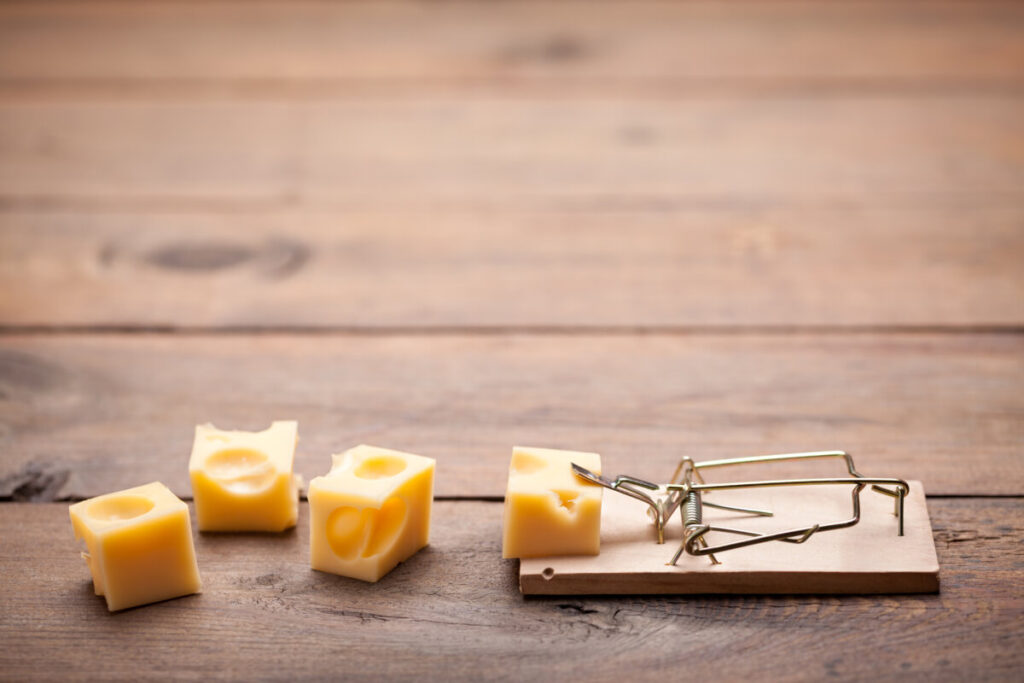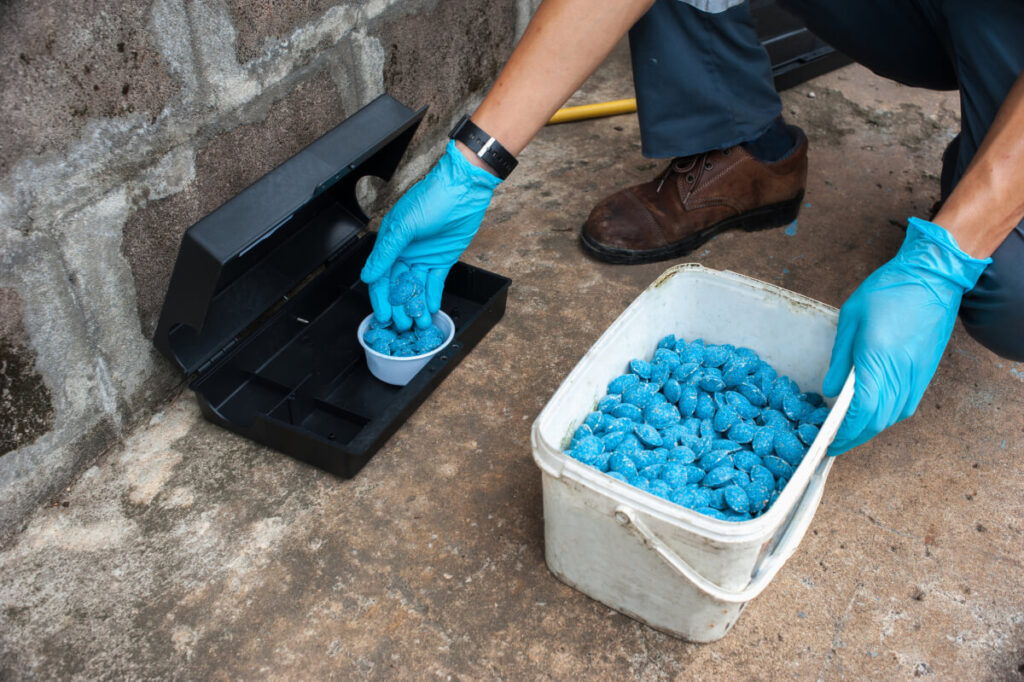
Mice and rats are the worst pets to invade a home because of the health risks and damages they cause. A homeowner’s first instinct is to use spring traps to eliminate these pesky rodents, but this method might not always be the best way to get rid of them for good. Rodents are intuitive creatures that instinctively know what’s dangerous for them.
So how do rats and mice detect spring traps? Rodents are smart, sneaky creatures that have a good sense of smell, allowing them to detect the scent of danger even from afar. They’re always on high alert when walking around the house, which is why they’re cautious around new things that are unfamiliar to them.

Rat or mice infestation is one of the most common household problems that American households encounter, especially as winter starts. According to the National Pest Management Association, about 21 million homes every year are invaded by these sneaky four-legged critters during fall and winter.
People who already had a rodent infestation before know how frustrating it is to get rid of these pests. When there’s a rodent sneaking around the house, the first thing that many homeowners do is buy a spring trap. It’s a traditional way of catching rats and mice that’s still used even by a pest control professional or wildlife damage control company.
There are times when rodents instinctively avoid the spring traps. Here’s how rats and mice know about rat traps and what to do about them:
There’s a good reason why mice and rats are always the subjects of research – they’re smart creatures. They always follow the instinct that tells them about the dangerous things in their surroundings, allowing them to survive even the harshest conditions.
Don’t be surprised if you see a rodent running along the wall. This is a behavioral response that helps them get away quickly without triggering spring traps or stepping on glue traps. This is also one reason why installing mouse traps in the middle of a room is useless – only a desperate rat or mouse takes their chances to reach for the bait there.
Mice and rats have a good sense of smell that allows them to hunt food supplies. This ability also allows them to survive, especially when cornered. These pesky rodents know how humans and other predators smell. If they smell humans on or around the trap, they’ll do anything they can to avoid getting caught.
These rodents also use their noses to detect threats in another way. Smelling the stench of dead mouse or rat left in mouse traps serves as a warning for them to stay away from the area.
Aside from proper hygiene purposes, this is why you must dispose of the dead rodent immediately. Clean the reusable trap properly so that it won’t repel rodents instead of attracting them. Just make sure to use gloves, sanitize the area, and follow the state regulations about animal disposal to keep everyone safe from rodent-transmitted diseases.
Aside from their great sense of smell, rodents also have a quick reaction time. Even if there’s food in a spring trap, these rodents still carefully plan on making their move. Their senses tell them when the classic snap trap springs as they’re nibbling on the bait, allowing them to move out of the trap’s way and avoid getting caught.
To keep the mouse from escaping, it’s important to lay spring traps in groups and strategic places. If the rodent manages to react to the spring trap they’re feeding on, then they’re more likely to get caught by the other ones nearby as they flinch or escape.
Rats and mice are always cautious of anything new in their surroundings, including spring traps. They avoid getting near the entire trap until some time has passed or when they know that these devices aren’t dangerous to them.
These rodents have a good sense of smell that allows them to escape from harm’s way, but it’s also a helpful technique to lure them into the trap. Rats and mice become less afraid of something if it has a familiar scent or it’s something they always encounter.
Try putting some bait around the trap, but don’t set it just yet. Wait for a few hours or days until the rodents start interacting with both the bait and the trap. This means that even the larger rodents already think that the traps are harmless for them, making the spring traps more effective in catching rats and mice once they’re set.

Aside from a rodent’s instincts, there are also other factors why the spring traps aren’t catching mice or rats. Here are a few common reasons why your traps aren’t working and what you can do about them:
The effectiveness of the mouse trap depends on the bait used, which is why it’s crucial to pick the right one that attracts the pesky rodents. Although rats and mice are opportunistic feeders that eat whatever’s available to them, some baits might still work better than others. If you’re unsure about which type of bait lures the rodents out of hiding, here’s a list of baits to use and avoid:
In addition to using the right type of bait, it’s also important to put just the right amount on the trap. Putting too little isn’t enough to attract the rodents while leaving too much allows them to take the bait without triggering the trap. It all depends on the specific type of bait used, but a pea-sized smear is the recommended amount for peanut butter and other sticky food baits.
It’s easy to get the placement of the spring or snap trap wrong on the first try. However, every day that these rodents are infesting the property only puts you and your family at greater risk of damages and diseases. Mice and rats are often afraid of open spaces, which is why they usually travel along the walls of the dark areas in the house.
When installing spring traps, make sure that the bait and trigger part of the device is facing the wall. This tempts the rodent to explore them instead of walking around the mouse trap for the bait. Search around the house for different signs of continual mouse activity (droppings, foul smell, grease marks, and scratch marks) and place the spring traps there. This increases the chances of catching mice and rats.
Mice and rats reproduce at an alarming rate. There’s already dozens of them if you spot one scurrying around the kitchen trying to find a food source. Even though they come in reusable kinds, one or two spring traps won’t be enough to put a dent in the mouse and rat populations infesting the property.
The most effective strategy is to place multiple spring traps every 2 to 3 feet along the rodent’s way. Add more traps between shorter distances if there’s a lot of rat or mice activity in the area. You should also use more spring traps on the first night of activating the traps because they’ll most likely catch rodents on any other subsequent night.

Some mouse and rat traps work better than others in certain situations. If the snap trap doesn’t catch a mouse or rat even after a few days, then it might not be the best type of rodent trap for your home. Here are a few other kinds of rodent types to use, as well as the advantages and disadvantages of using them:
| Pros | Cons | |
| Spring Trap | They’re more accessible than most types of traps. They also come in plastic, reusable kinds, but make sure to clean them thoroughly before resetting them. | This type uses a strong, snapping force that might cause injuries on curious pets and children if accidentally triggered. When using this trap at home, make sure that they’re out of the reach of pets and children. |
| Bait Station | Bait stations are an effective solution to decreasing rodent populations. They come with poisonous rodent baits that kill several mice and rats at a time. | There’s a chance of accidental poisoning if the rodenticide is swallowed by pets or children. Make sure to keep the loose baits in a cool, dry place and away from the reach of pets and children. |
| Live Trap | Live traps (or box traps) are the most humane option to catch rodents. They’re also easy to use and set up. Some kinds of live traps even hold up to four rodents at a time. | Rodents might only return to the house or cause problems to other people if they’re not released in the right place. Make sure to free them at least a hundred yards from the property. |
| Glue Trap | Glue traps are easy to set up and clean. Just place it along the wall where mice and rats frequently pass, then get rid of the dead rodent it catches – trap and all. A glue trap also comes in a non-toxic option. | This type of rodent trap easily loses its effectiveness if it’s placed in wet or dusty areas. Always consider its placement to ensure that it works properly. |
| Electric Trap | Electric traps are reusable, which makes them more cost-effective than other types of rodent traps. | These traps work better when used indoors. Installing them outside might cause the device to malfunction. |
While spring traps are effective in catching a few mice, they won’t be enough to get rid of the rodent infestation for good. If you need help eliminating the mice and other pests at home, give us a call at Yale Pest Control.
Our team of highly-trained pest control professionals has the experience and equipment needed for dealing with rodent infestations in residential and commercial properties. We use IPM-based methods to treat the rodent problem at its root and ensure they won’t be back for a long time.
Reach out to us by visiting our website or calling us at (800) 750 – 9253 for a free quote.